Brew Number Two: Belgian Saison
I swear the idea for having my own site was to have a place to write about web design, music and other things I’ve been doing for a long time but not really writing about. So far it’s looking like a beer blog. Not that there’s anything wrong with that, I’m just saying I realize it’s probably not what you were expecting. It’s not what I was expecting either. Anyway…
An update on the Belgian Wit: It tastes good! It’s been over a month now since bottling and I think it’s finally settled into being a real beer. It’s definitely a bit over-carbonated but not bad for a first try. If you want some, let me know. It probably won’t last long, which is why I already started on beer number two.
After another trip to Keystone Homebrew I had all the ingredients needed for a Belgian Saison which I brewed up several weeks ago. The process was very similar to the Belgian Wit, so I won’t go into the details again, but there were a few notable differences, mainly the use of specialty grains and the combination of both liquid and dry malt extract.
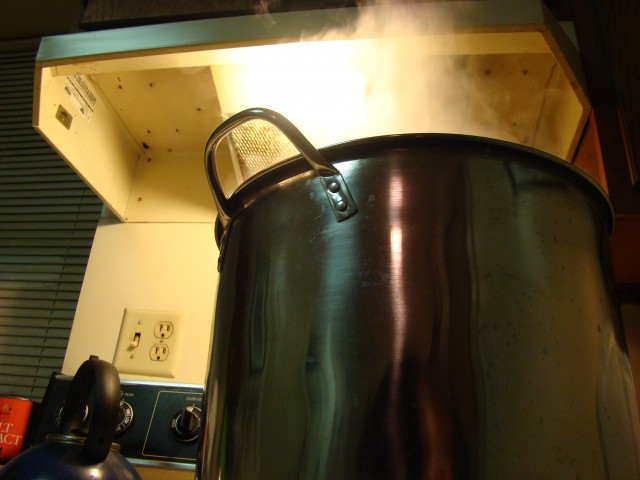
The specialty grains are basically the same type of grains you would use to make an all-grain brew (all commercial beers are all-grain), but they are just “steeped” rather than “mashed” before you start the boil. This recipe called for 1/2 lb of Weyermann Carahelles (crushed), which are placed in a muslin bag and steeped in 1.5 gal of hot water (145-160 degrees) for about 30 minutes. This adds some grain flavor and color that you otherwise wouldn’t get with an all extract brew.

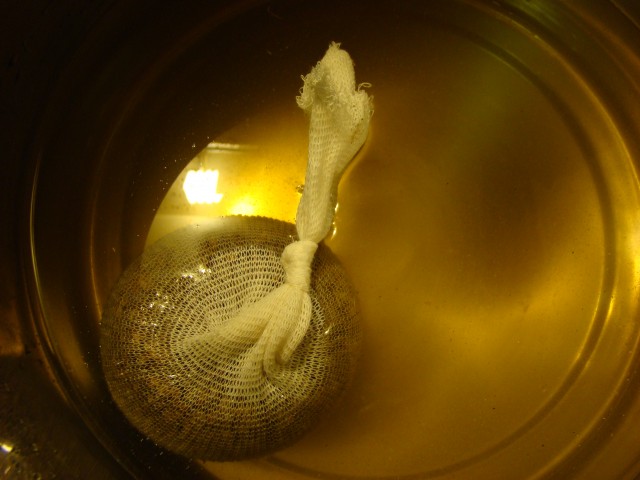
The steep went pretty smoothly other than the fact that I didn’t have whatever thermometer you’re supposed to use for a pot this big (I guess a candy thermometer) and had to use an instant read thermometer attached to the side of the pot with a long twist tie and clip magnet from my fridge. Shit worked.
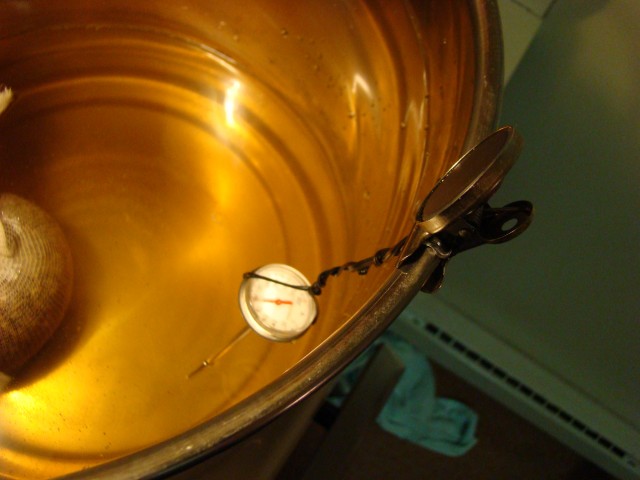
For extract I used 6.6lbs of light liquid malt extract (LME) rather than wheat and added an extra lb of wheat dry malt extract (DME), not because I know what I’m doing but because that’s what the recipe said to do. This recipe also called for 1lb of light candi sugar which came in a bag and looked basically like rock candy. I guess since this beer has a higher ABV% it needs more sugar to start with. Or maybe there’s some other reason I don’t know about.
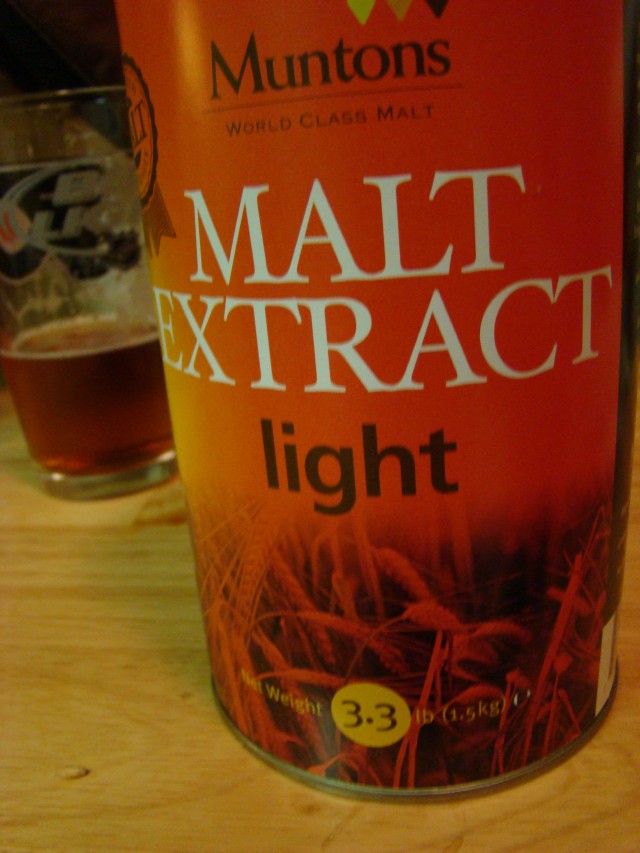
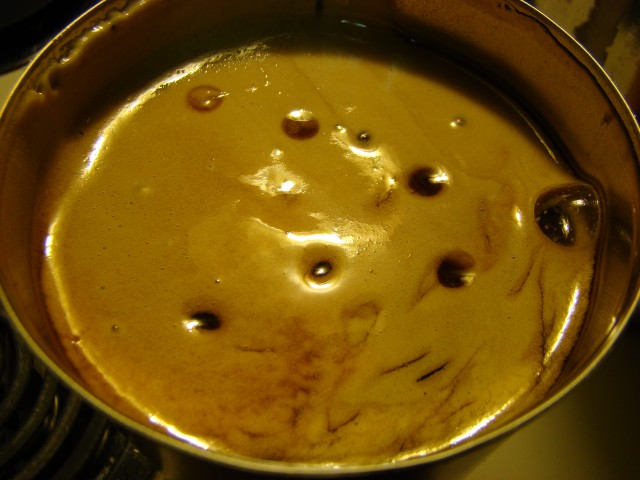
“The light malt extract is much lighter than the wheat.”
— Captain Obvious
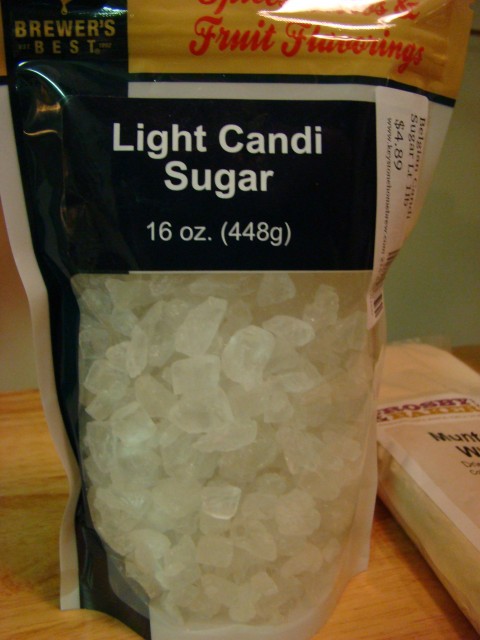
Another difference in this boil was the use of bittering (Sterling), flavoring (Kent Golding) and finishing (Kent Golding and Czech Saaz) hops. By comparison, for the Belgian Wit I just used bittering hops and then used coriander and orange peel for the flavoring. If you don’t know (or care) what difference that makes, don’t worry about it. Or read this. The beer will still taste good either way.

This one has been fermenting for 3 weeks now. Actually the fermentation doesn’t really last that long but it’s been in a fermenter for 3 weeks. For the first 2 weeks it was in the same 5 gal bucket I used last time (the “primary”) and last weekend I “racked” it to a 5 gal glass carboy I bought for doing secondary fermentation.
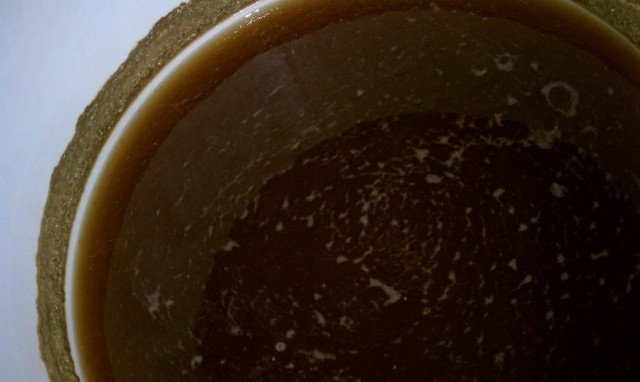
The first thing I noticed after cracking the lid of the bucket was that it smelled really good. I took a sample for a hydrometer reading, which was actually sort of pointless because the original reading I took was way off where it was supposed to be. I don’t think it was actually that far off, I just hadn’t mixed it enough after topping off the bucket with clean water, so the heavier stuff was all at the bottom. But it gave me an excuse to have a taste and even though it’s basically flat at this point, it tasted really good. I can’t wait to see how this one turns out.
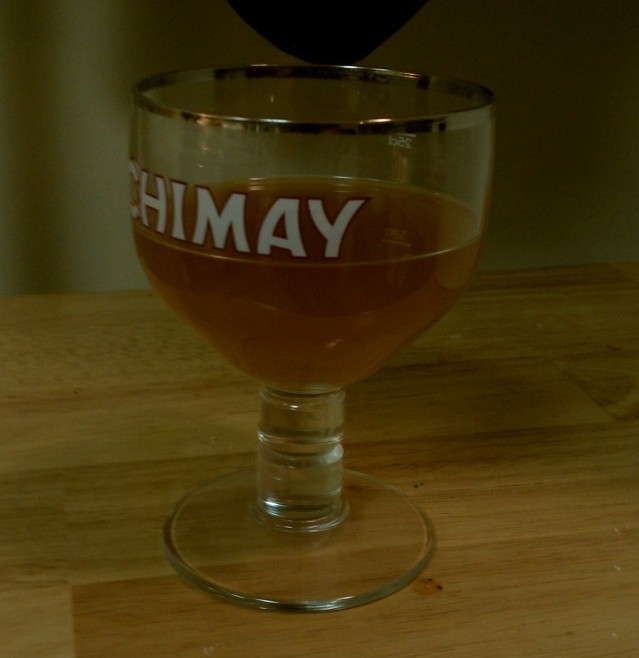
The secondary fermentation is optional but it’s nice because it frees up the primary (the bucket, or a 6 gal glass carboy if I decide to get one, which I probably will because it’s better because you can see through glass) for yet another batch and supposedly helps the beer to settle out some more because the transfer leaves behind all the dead yeast cells at the bottom of the primary.
The process for transferring the wort to the carboy is the same that I used to get it into the bottling bucket: auto-siphon, rubber tubing and some patience.
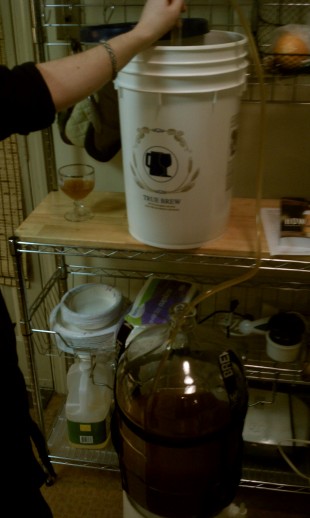
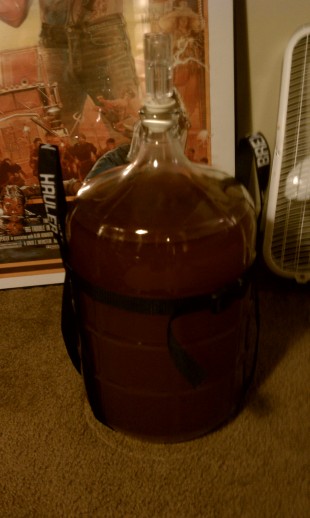
So far I’ve been brewing faster than I can drink it all but I don’t see a problem with that. It would actually be more of a problem if I was keeping up with the drinking. This just means I have more to give away, at least until I get a business plan together and start doing this for real (which may or may not ever happen).
As usual I’m already thinking about what to do next. Whatever it is I’m pretty sure I’m gonna do something non-Belgian. Maybe a double IPA. Something that will melt your palate in half.